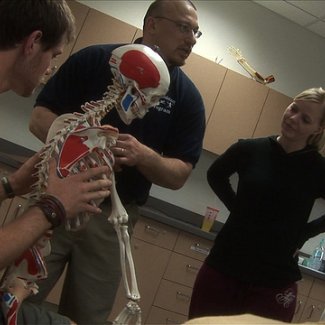
Some of the most common daily activities in the life of an athletic trainer are applying protective devices to prevent further injury, evaluating injuries, providing first aid emergency medical care, developing rehabilitation plans for injured athletes, and implementing training programs according to patients’ skill level, and keeping detailed records of progress.
Salary
How much does an athletic trainer make? The May 2012 records from the Bureau of Labor Statistics indicate that the 20,780 athletic trainers employed in the United States earn an annual average athletic trainer salary of $44,010
The bottom 10% of athletic trainers earned $25,960 or less, while the top ten percent of athletic trainers earned $64,140 or more each year. Athletic trainers employed at physician offices earn less than average at $40,320 annually, those that work at secondary schools make much more with an average $53,530 salary. The top-paying states for this occupation are New Jersey and the District of Columbia, where athletic trainers earn a mean $59,090 and $58,680 respectively.
Work Environment
The majority of athletic trainers, around 36 percent, are employed in educational sports facilities at colleges, universities, junior colleges, and high schools. Other athletic trainers may find employment within a private physician’s office, professional sports team, rehabilitation center, therapy clinic, military base, or fitness/recreational sports center.
Athletic trainers who work for a sports team during games are likely to have irregular hours, working evenings and weekends on a regular basis. Many athletic trainers work full-time and spend most of their time outdoors on various sports fields in a wide spectrum of weather conditions.
Job Outlook
Along with medical advances in injury prevention and more sophisticated injury treatment options, new research has revealed that the effects of concussions can have a particularly severe long-lasting impact on athletes’ brains.
Since athletic trainers are usually on-site as the first line of defense when these injuries occur, employment for these professionals is expected to grow much more rapidly than the average for all other national occupations at a rate of 30 percent from 2010 to 2020. The highest demand for new athletic training positions is predicted to occur at secondary schools and youth leagues to protect children’s developing minds.












It’s a pleasure to find such raolantiity in an answer. Welcome to the debate.